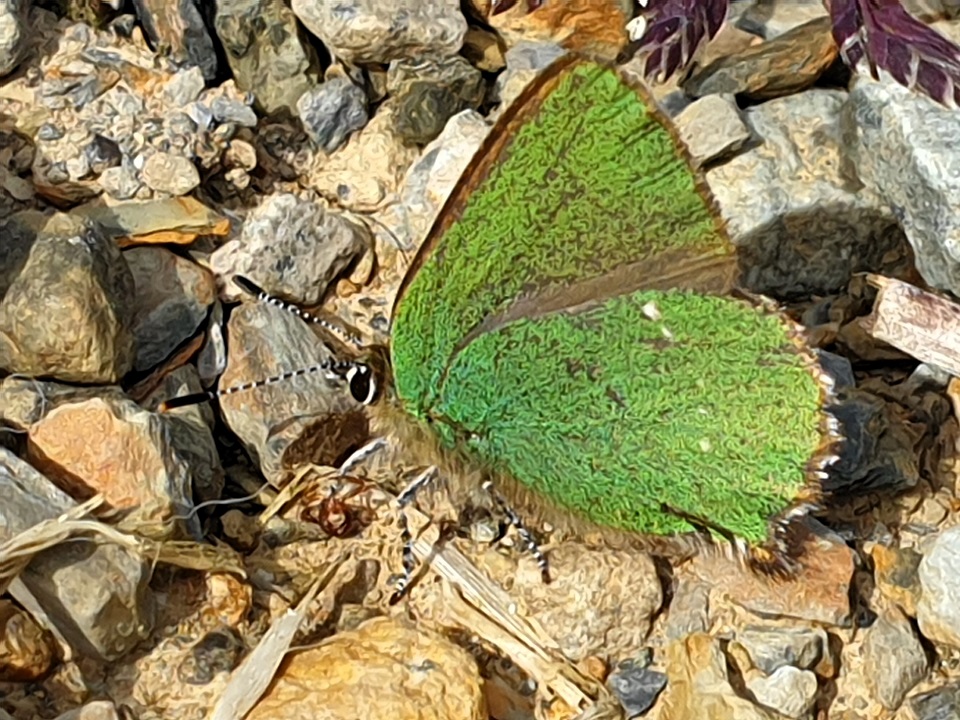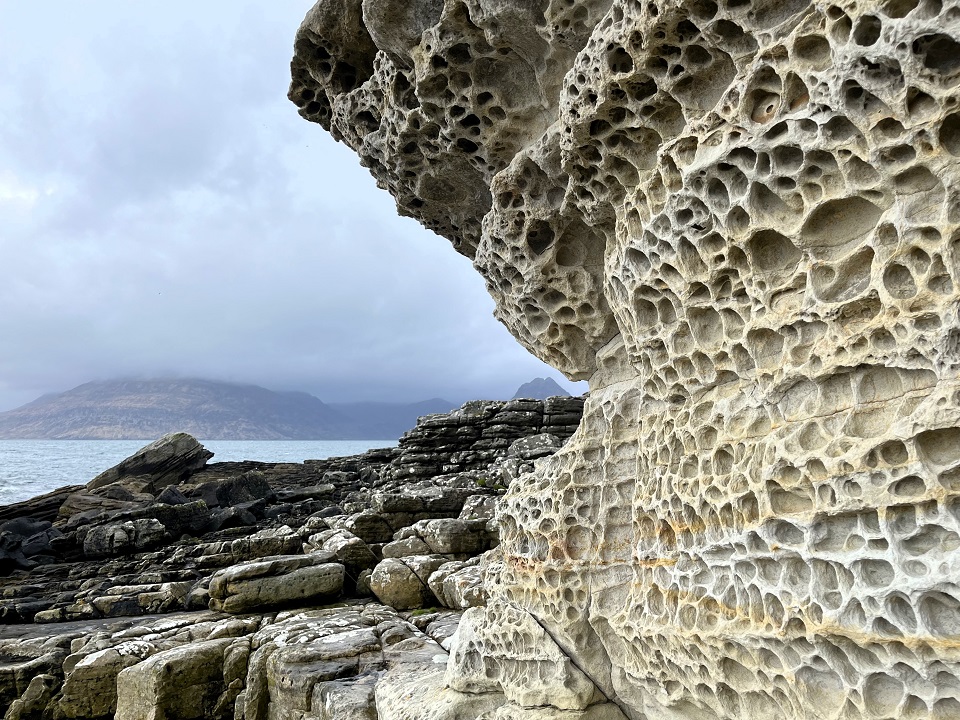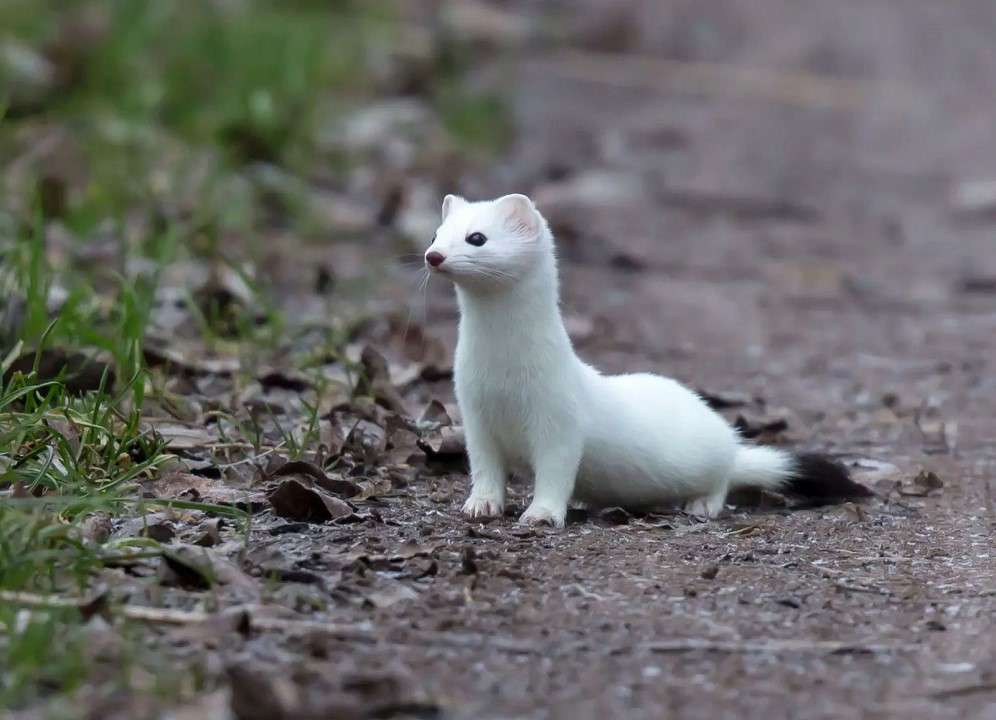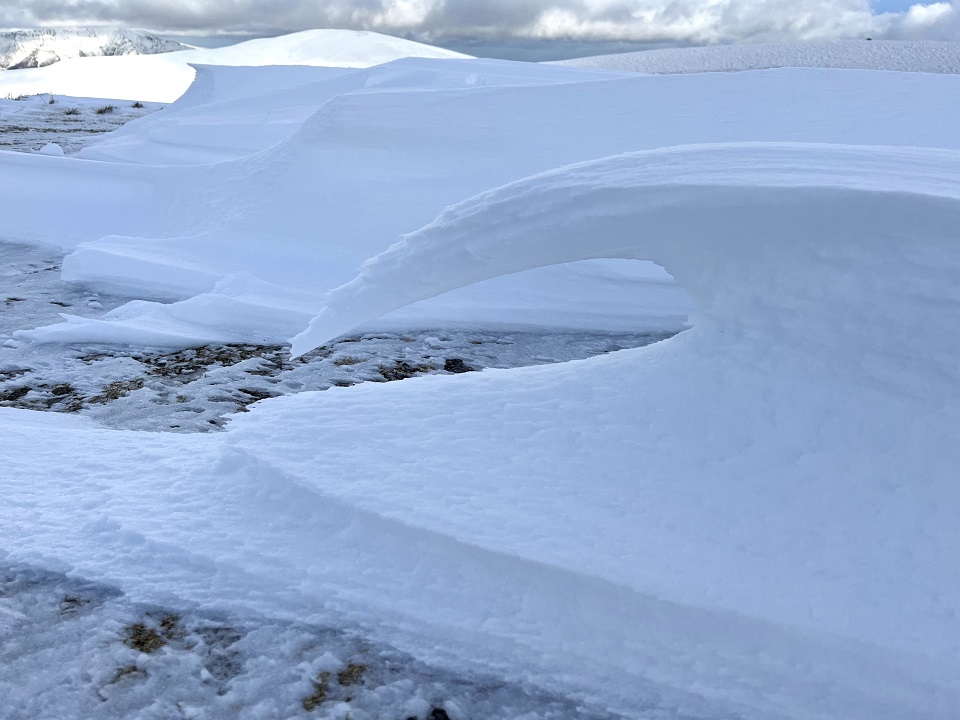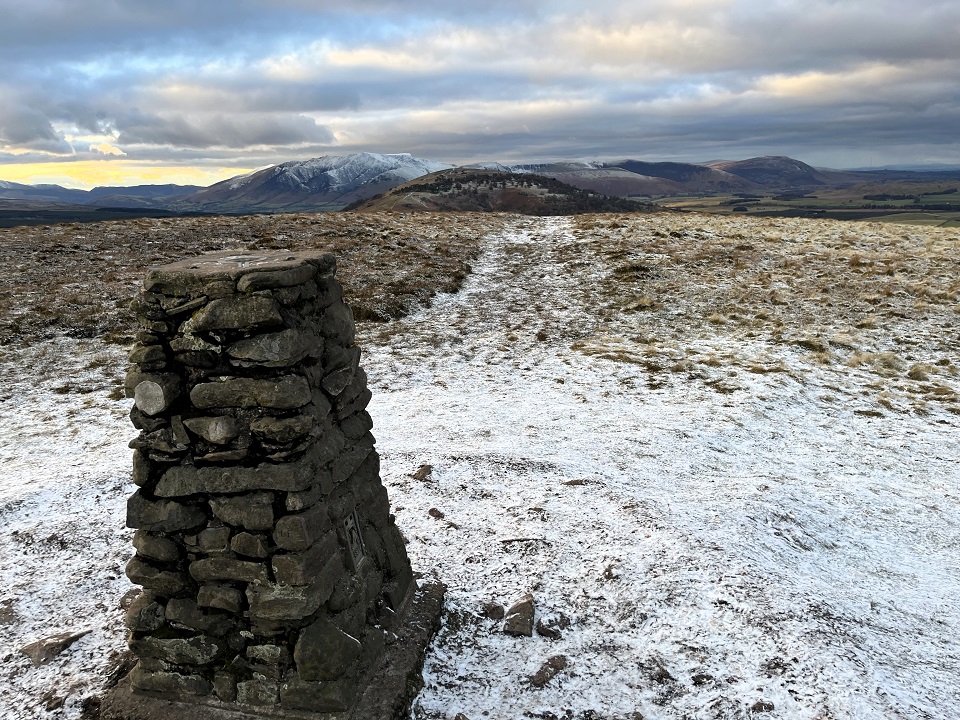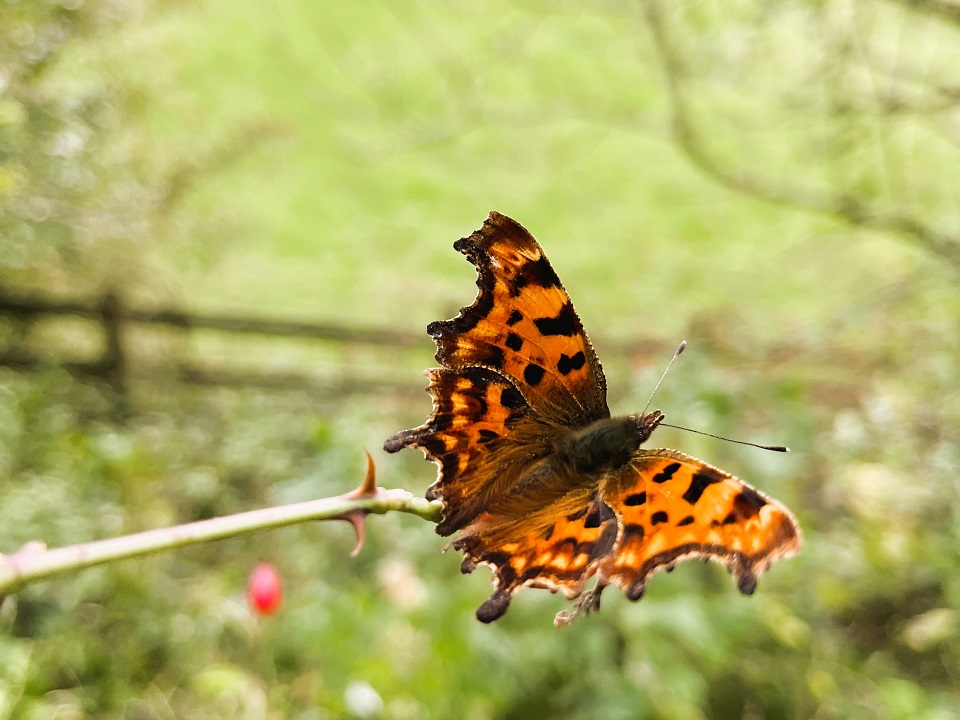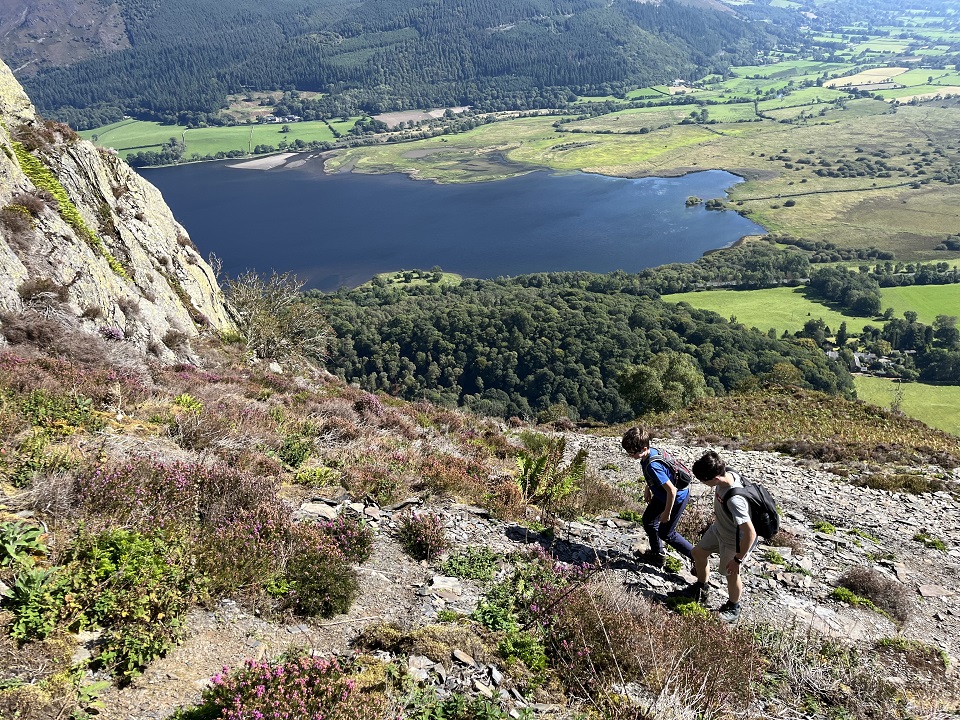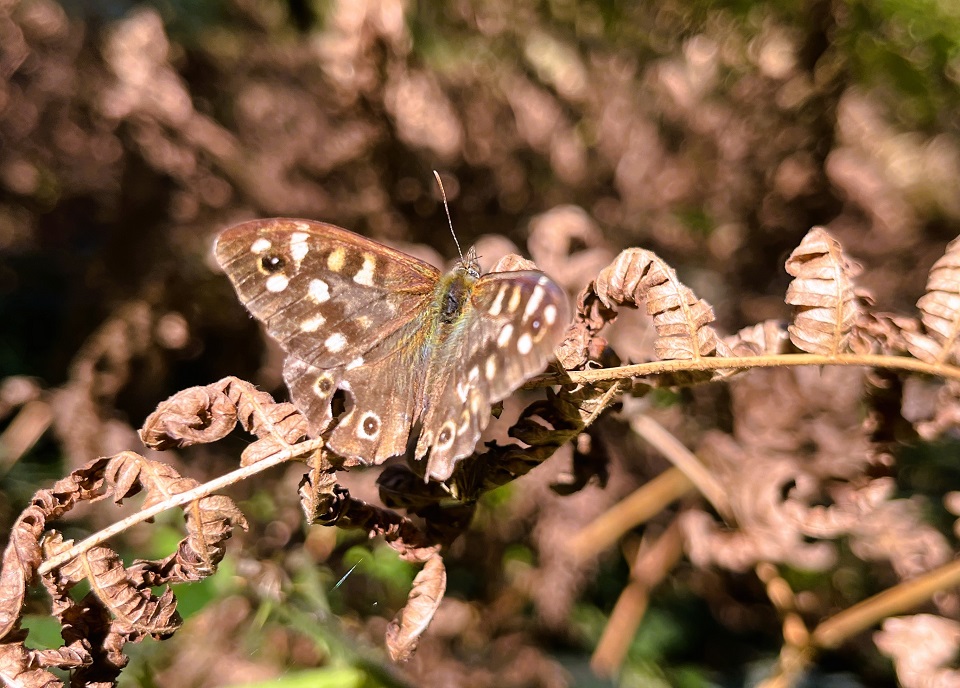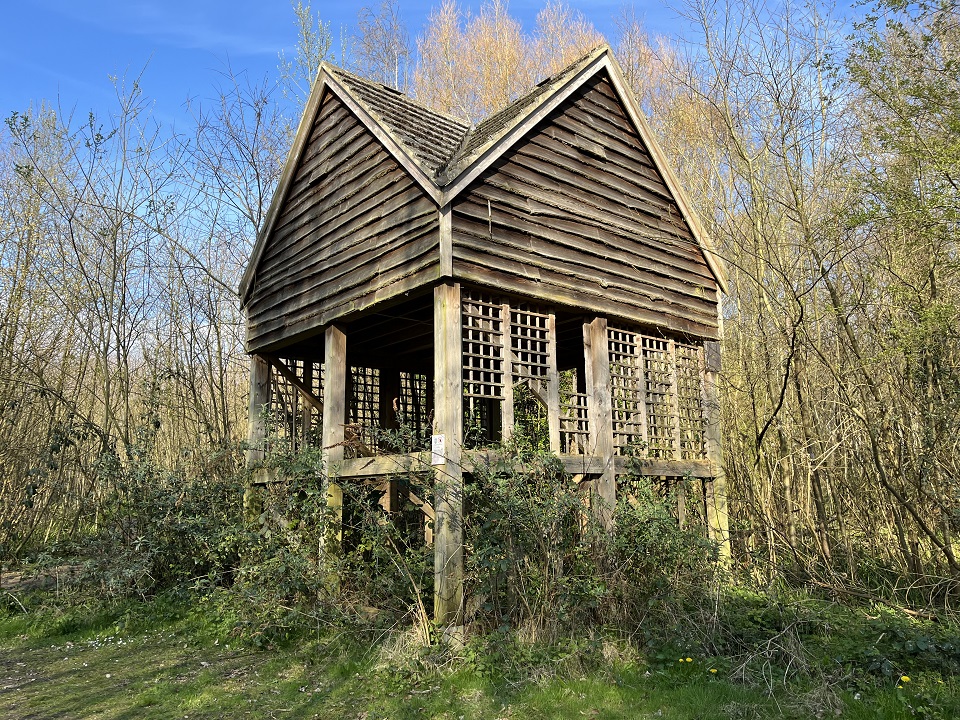The elusive Green Hair Streak
The Green Hair Streak (Callophrys rubi) is the UK’s only truly green butterfly. Whilst not yet endangered, it is not easy to find and tends to live in small colonies near its favourite food and larval plants. Mid April until the end of June is the best time to see Green Hair Streaks and, knowing that a small colony exists on a local hillside near where there is plenty of its favoured bilberry, Steve set out to see if he could find any. As luck would have it there were two of the tiny creatures flying and briefly landing, though despite following them through the vegetation for a long time, they never paused long enough to permit a good photograph (the image is from a previous encounter at the same place).
These butterflies are about the size of an adult’s thumbnail and blend in to their surroundings making them hard to spot. They always perch with their wings closed, which is when the green undersides to their wings become apparent. The name ‘Hair streak’ comes from the faint white line, or line of white dots on the green underwings, though this can vary significantly between individual animals. Several other British butterflies also have the hair streak marking and name: the Purple, Black, Brown and White Letter Hairstreaks.
If you are interested in learning more about natural history or would just enjoy a nature walk with information and insight into the surrounding environment, then Steve will be pleased to help. Get in touch at steve@stevebanksoutdoors.co.uk or on 07796 213817.
